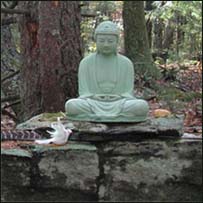|
|
 |
Please support Dharma Seed with a 2025 year-end gift.
Your donations allow us to offer these teachings online to all.

|

|

|
The greatest gift is the
gift of the teachings
|
|

|
| |
|
Dharma Talks
|
2017-06-07
Happiness Is Possible: De-conditioning the Negativity Bias – Part 2
49:45
|
|
Tara Brach
|
|
|
There is an inner freedom that expresses as happiness and peace, and it is accessible when we arrive in openhearted presence. As the Buddha said, “If it were not possible to find liberation, I would not teach about it.” In this two part talk, we will look at the conditioning that blocks happiness and two primary pathways of practice that evolve our consciousness and free our hearts.
“We rarely pause when we see something that’s delicious or beautiful or that brings up wonder. We barely pause and just take it in. We really don’t pause much, which is really the essence of savoring…”
|
|
Insight Meditation Community of Washington DC
:
IMCW Wednesday Evening Talks
|
|
|
2017-06-06
Honouring Life
39:51
|
|
Helen Stephenson
|
|
|
Life is not a problem to be solved but a mystery to be lived. Instead of measuring our progress we engage in the practice with our entire being. This opens us up to the "light" that is in us and around us and we can experience a joy and connection with life that is beyond measure.
|
|
Gaia House
:
Insight Meditation and Yoga
|
|
|
|
|